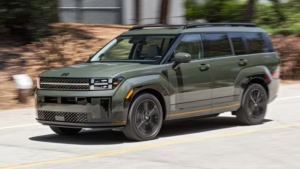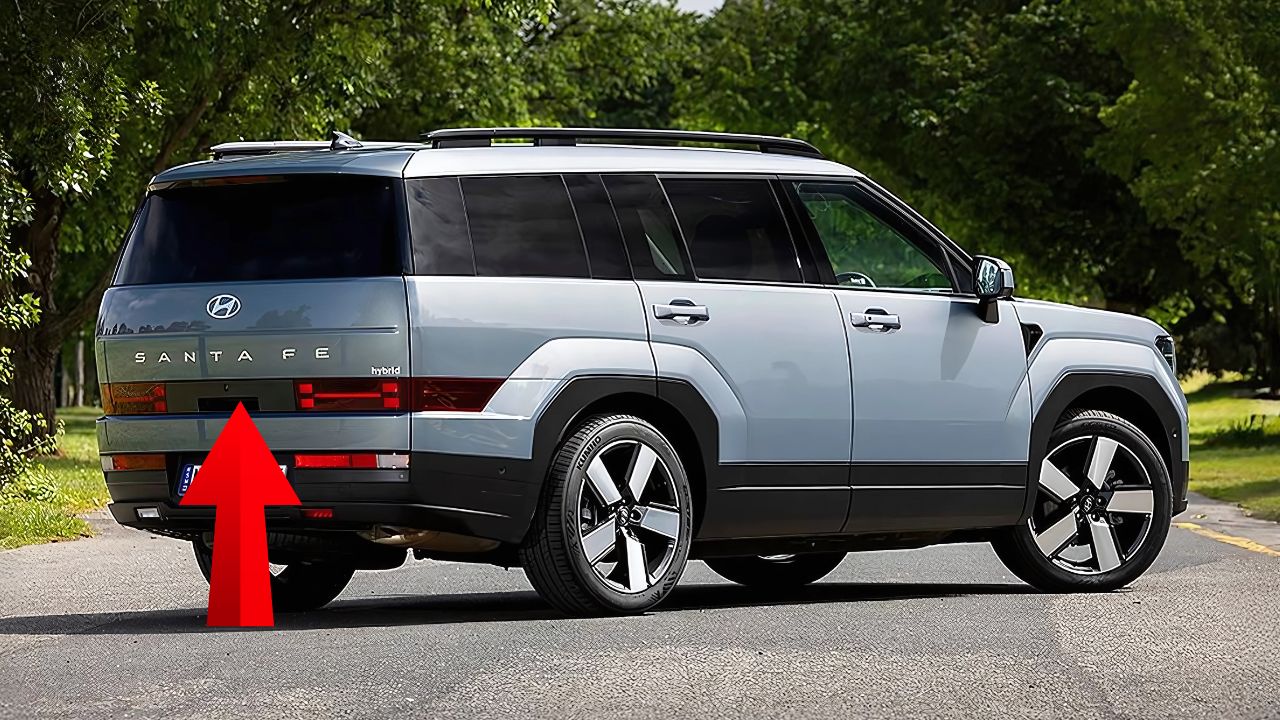Australian families looking to purchase Hyundai’s popular Santa Fe Hybrid are facing a sobering reality check as the Korean automaker implements significant price increases across its 2025 model lineup. The latest pricing adjustments have sent ripples through the family SUV market, leaving many prospective buyers questioning whether their dream of owning this award-winning seven-seater remains financially viable.
The price surge represents more than just numbers on a dealer’s price list – it reflects broader market pressures, supply chain challenges, and evolving consumer expectations in Australia’s increasingly competitive automotive landscape. For families who have been saving diligently for their next vehicle purchase, these increases translate into extended saving periods, compromised feature selections, or potentially abandoning their Santa Fe aspirations altogether.
The Numbers Behind the Sticker Shock
The 2025 Hyundai Santa Fe Hybrid now commands a starting price of $57,000 before on-road costs for the entry-level front-wheel-drive variant – a notable $1,500 increase from the previous year’s $55,500 asking price. However, this figure represents just the tip of the pricing iceberg when viewed against historical benchmarks.
More significantly, the current entry point sits $9,450 higher than the previous generation’s starting price of $46,050, though direct comparisons prove challenging given Hyundai’s strategic decision to eliminate petrol and diesel options in favor of an exclusively hybrid lineup. This transition has effectively repositioned the Santa Fe as a premium offering within the large SUV segment.
The price escalation becomes even more pronounced at the upper end of the range. The flagship Calligraphy variant, available in both six and seven-seat configurations, now demands $76,500 before on-road costs – representing a $1,500 increase over the previous model year. When factoring in registration, insurance, and dealer charges, buyers can expect drive-away prices approaching $85,000 or more, depending on their location and chosen options.

Market Positioning and Competitive Landscape
These pricing adjustments have fundamentally altered the Santa Fe’s competitive positioning within Australia’s crowded large SUV market. The hybrid model now sits $4,000 above its petrol-powered sibling, creating a substantial premium that challenges traditional buyer expectations about hybrid technology accessibility.
Direct competitors like the Toyota Kluger Hybrid and Kia Sorento have maintained more stable pricing strategies, potentially capitalizing on Hyundai’s aggressive price positioning. The Kluger Hybrid, long considered the benchmark in this segment, continues to offer compelling value propositions that may attract price-sensitive buyers away from the Santa Fe.
However, Hyundai’s gamble on premium positioning hasn’t deterred all consumers. Sales figures reveal a remarkable 78.3 percent increase in Santa Fe deliveries through April 2025 compared to the same period in the previous year. This surge suggests that despite higher prices, consumers recognize the substantial improvements in design, technology, and efficiency that the new generation offers.
What Drives These Price Increases?
Understanding the factors behind these significant price increases requires examining multiple market dynamics currently affecting the Australian automotive industry. Global supply chain disruptions, while improving, continue to impact component costs and availability, particularly for sophisticated hybrid powertrains and advanced electronic systems.
Currency fluctuations between the Australian dollar and manufacturing currencies, particularly the Korean won, directly influence pricing strategies for imported vehicles. When the AUD weakens against the won, Australian consumers inevitably bear the cost burden through higher retail prices.
The transition to hybrid-only powertrains represents another cost driver. Hybrid systems, despite their long-term fuel savings benefits, require substantial upfront investment in battery technology, electric motors, and sophisticated control systems. These components command premium prices compared to traditional internal combustion engines, costs that manufacturers must recover through retail pricing.
Advanced Technology Comes at a Premium
The 2025 Santa Fe Hybrid incorporates cutting-edge technology that justifies some price premium expectations. The 1.6-liter turbocharged hybrid system produces an impressive 172kW and 367Nm of torque while achieving fuel consumption figures of just 5.6 liters per 100 kilometers – a significant improvement over previous generation models.
Standard equipment levels have also expanded considerably. Even entry-level variants include sophisticated infotainment systems, comprehensive safety suites, and premium interior materials that would have been optional or unavailable on previous generations. The base model features 20-inch alloy wheels, 12.3-inch digital displays, wireless smartphone connectivity, and Hyundai’s complete SmartSense safety package.
The cabin showcases substantial improvements in materials quality, noise insulation, and space utilization. Seven-seat configuration comes standard across the range, with the premium Calligraphy offering luxurious six-seat layouts featuring captain’s chairs in the second row.
Regional Impact Across Australia
The pricing impact varies significantly across Australian states and territories due to differing stamp duty rates, registration fees, and dealer delivery charges. Metropolitan buyers in Sydney and Melbourne face the highest on-road costs, potentially pushing total ownership costs beyond $85,000 for well-equipped variants.
Regional buyers, while potentially benefiting from lower registration costs in some states, face additional challenges including limited dealer networks and reduced negotiating power. Rural families, who often rely heavily on seven-seat SUVs for both daily transportation and recreational activities, find themselves disproportionately affected by these price increases.
The timing proves particularly challenging for families already grappling with broader cost-of-living pressures. Rising mortgage rates, increased grocery costs, and elevated energy bills have squeezed household budgets, making large discretionary purchases like vehicles increasingly difficult to justify.
Industry Analyst Perspectives
Automotive industry experts suggest that Hyundai’s pricing strategy reflects broader market realities rather than opportunistic price gouging. The company’s decision to position the Santa Fe as a premium offering acknowledges changing consumer expectations and the need to maintain healthy profit margins in an increasingly competitive market.
Some analysts argue that the price increases, while initially shocking, may prove sustainable given the vehicle’s award recognition and substantial improvements over previous generations. The Santa Fe’s recent accolades, including Drive’s 2025 Car of the Year award, demonstrate that industry experts recognize its value proposition despite higher pricing.
However, other market observers express concern about pricing accessibility for middle-income families who have traditionally formed the core customer base for large family SUVs. These concerns center on whether manufacturers risk pricing out their traditional buyers in pursuit of higher profit margins.
Consumer Response and Adaptation Strategies
Australian consumers are responding to these price increases through various adaptation strategies. Many families are extending their current vehicle ownership periods, deferring purchases until prices stabilize or more competitive alternatives emerge.
Others are exploring certified pre-owned options, seeking late-model examples of previous generation Santa Fe models that offer similar functionality at reduced prices. The used car market has responded accordingly, with well-maintained hybrid variants commanding strong resale values.
Some buyers are reconsidering their feature requirements, potentially accepting base-model specifications to achieve more palatable pricing. However, this strategy proves challenging given the Santa Fe’s comprehensive standard equipment levels that leave limited scope for downgrading.
Looking Forward: Sustainability of Current Pricing
The sustainability of current pricing levels remains questionable as market conditions continue evolving. Industry predictions suggest that increased competition from Chinese manufacturers and potential interest rate reductions could pressure prices downward throughout 2025.
Hyundai’s commitment to the Australian market suggests that pricing adjustments may occur if sales volumes decline significantly. However, strong current sales figures indicate that many consumers accept the premium positioning, at least in the short term.
The introduction of additional hybrid and electric alternatives from competitors may ultimately force more competitive pricing. As the market matures and production volumes increase, hybrid technology costs should decrease, potentially enabling more accessible pricing in future model years.
Frequently Asked Questions
Q: Is the Santa Fe Hybrid worth the price increase compared to the previous generation? The new Santa Fe Hybrid offers significant improvements including better fuel economy, more advanced technology, enhanced safety features, and a completely redesigned interior and exterior. Whether these improvements justify the price increase depends on individual priorities and budgets.
Q: How does the Santa Fe Hybrid pricing compare to its main competitors? The Santa Fe Hybrid is now priced higher than the Toyota Kluger Hybrid but offers more standard features. Compared to the Kia Sorento, pricing is competitive given the Santa Fe’s premium positioning and recent improvements.
Q: Will Santa Fe Hybrid prices decrease in the near future? Industry experts predict potential price pressure as competition increases and production volumes rise. However, Hyundai’s strong current sales suggest prices may remain stable in the short term, with any reductions likely occurring gradually rather than dramatically.

